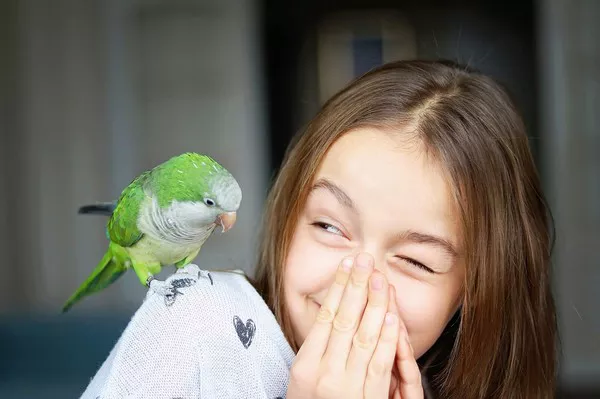Bearded dragons (Pogona vitticeps) are fascinating and popular reptile pets known for their unique appearance and charming personalities. These gentle creatures have specific dietary requirements that are crucial for their overall health and well-being. Providing a balanced and nutritious diet is essential to ensure your bearded dragon thrives in captivity. In this article, we will explore the best choices for a bearded dragon’s diet, including what to feed, how often to feed, and dietary considerations to keep your scaly friend happy and healthy.
Natural Diet of Bearded Dragons
Understanding a bearded dragon’s natural diet is the first step in providing them with the appropriate nutrition. In the wild, bearded dragons are omnivores, meaning they eat a combination of insects, small vertebrates, and plant matter. Their diet typically consists of:
Insects: Bearded dragons primarily feed on insects such as crickets, mealworms, waxworms, roaches, and silkworms. These insects provide essential protein and nutrients.
Vegetation: In their natural habitat, bearded dragons also consume a variety of plant material, including leaves, flowers, and fruits. These contribute fiber and essential vitamins.
Small Vertebrates: Occasionally, wild bearded dragons may consume small vertebrates like other lizards, rodents, or even small birds.
Water: Bearded dragons obtain most of their water from their diet and the environment, but they may also drink from standing water sources when available.
Now, let’s explore the best choices for a bearded dragon’s diet in captivity.
Insect Selection
Insects are a crucial part of a bearded dragon’s diet, providing essential protein and nutrients. Here are some of the best choices for insects:
Crickets: Crickets are a staple in a bearded dragon’s diet. They are rich in protein and can be gut-loaded with nutritious vegetables before feeding to provide extra nutrients.
Dubia Roaches: Dubia roaches are another excellent source of protein and are easily digestible. They have a favorable calcium-to-phosphorus ratio, making them a great choice for calcium supplementation.
Mealworms: Mealworms can be fed in moderation but should not be the primary insect due to their lower nutritional value. They are suitable as an occasional treat.
Silkworms: Silkworms are high in protein and low in fat, making them an excellent choice. They are also easy to digest, making them suitable for juvenile and adult bearded dragons.
Waxworms: Waxworms should be fed sparingly due to their high-fat content. They are a suitable treat but should not be a primary food source.
Plant Matter Selection
Plant matter is essential for providing fiber, vitamins, and minerals to your bearded dragon. Here are some suitable options:
Dark Leafy Greens: Offer a variety of dark, leafy greens such as collard greens, mustard greens, turnip greens, and dandelion greens. These are rich in calcium and other essential nutrients.
Squash and Pumpkin: These vegetables provide a good source of vitamins and fiber. Bearded dragons often enjoy butternut squash and pumpkin as part of their diet.
Bell Peppers: Bell peppers, both green and red, offer essential vitamins and a hint of sweetness that many bearded dragons find appealing.
Carrots: Carrots are a good source of beta-carotene and fiber. They should be grated or finely chopped to prevent choking hazards.
Fruits (in moderation): Bearded dragons can enjoy small amounts of fruits like blueberries, raspberries, and apple slices. However, fruits should be given sparingly due to their sugar content.
Supplementation
Supplementation is crucial to ensure your bearded dragon receives all the necessary nutrients. Dusting insects and vegetables with calcium powder containing vitamin D3 is essential, especially for growing juveniles. Multivitamin supplements should be used sparingly, typically once a week.
Hydration
Providing access to fresh water is essential, but bearded dragons often obtain most of their water from their diet and the environment. A shallow water dish can be placed in their enclosure, but it should be cleaned regularly to maintain water quality. Mist your bearded dragon and their habitat to create a humid environment, which helps with shedding.
Feeding Frequency
The frequency of feeding for bearded dragons depends on their age:
Juveniles: Juvenile bearded dragons require more frequent feedings. Offer insects and greens daily, dividing the total amount into two to three meals.
Adults: Adult bearded dragons can be fed every other day. Provide a variety of insects and vegetables to ensure a balanced diet.
Monitoring: Pay attention to your bearded dragon’s appetite and behavior. Adjust the feeding schedule as needed to maintain a healthy weight.
Dietary Considerations
To ensure your bearded dragon’s diet is well-rounded and balanced, consider the following dietary considerations:
Gut Loading: If you feed insects, gut load them with nutritious vegetables for at least 24 hours before offering them to your bearded dragon. This enhances the nutritional value of the insects.
Variety: Offer a diverse range of insects and vegetables to provide a wide spectrum of nutrients. Avoid relying heavily on one type of insect or vegetable.
Avoid Toxic Plants: Be aware of toxic plants, such as rhubarb and avocado, and ensure they are not part of your bearded dragon’s diet.
Avoid Wild Insects: Do not feed your bearded dragon wild-caught insects, as they may carry pesticides or diseases.
Hygiene: Maintain cleanliness in your dragon’s enclosure and food dishes to prevent the growth of harmful bacteria.
Conclusion
A well-balanced diet is essential for the health and happiness of your bearded dragon. By providing a variety of insects, dark leafy greens, and suitable vegetables, along with proper supplementation and hydration, you can ensure your scaly companion receives the nutrition they need to thrive in captivity. Regularly monitor their appetite and behavior to tailor their diet to their specific needs, and consult with a reptile veterinarian for any dietary concerns or questions. With the right diet and care, your bearded dragon can enjoy a long, healthy, and fulfilling life as a cherished member of your family.
Related Topics:

























